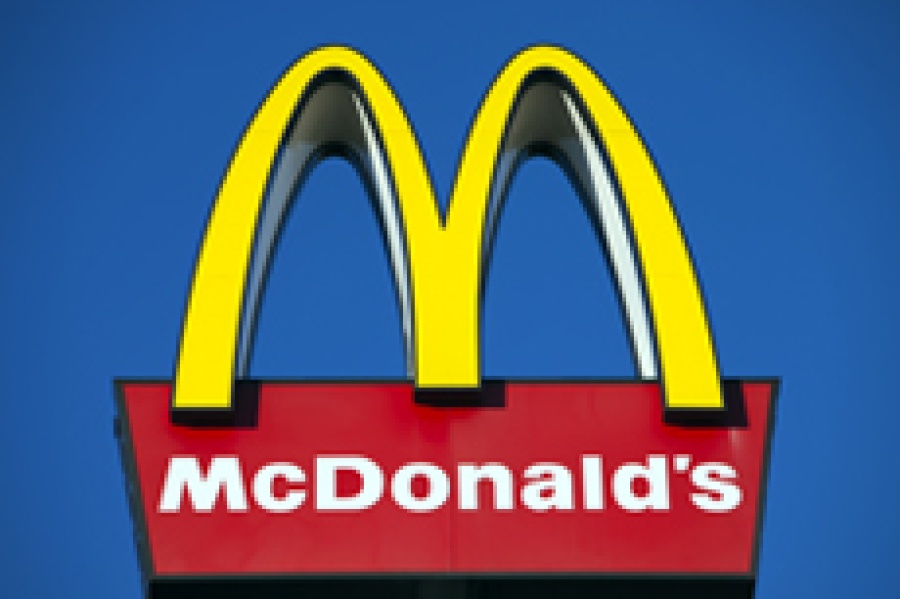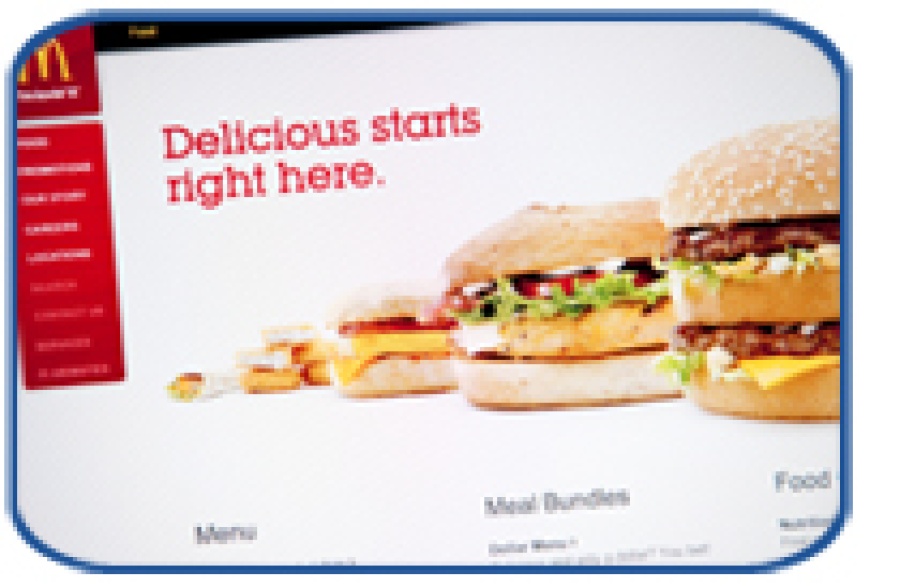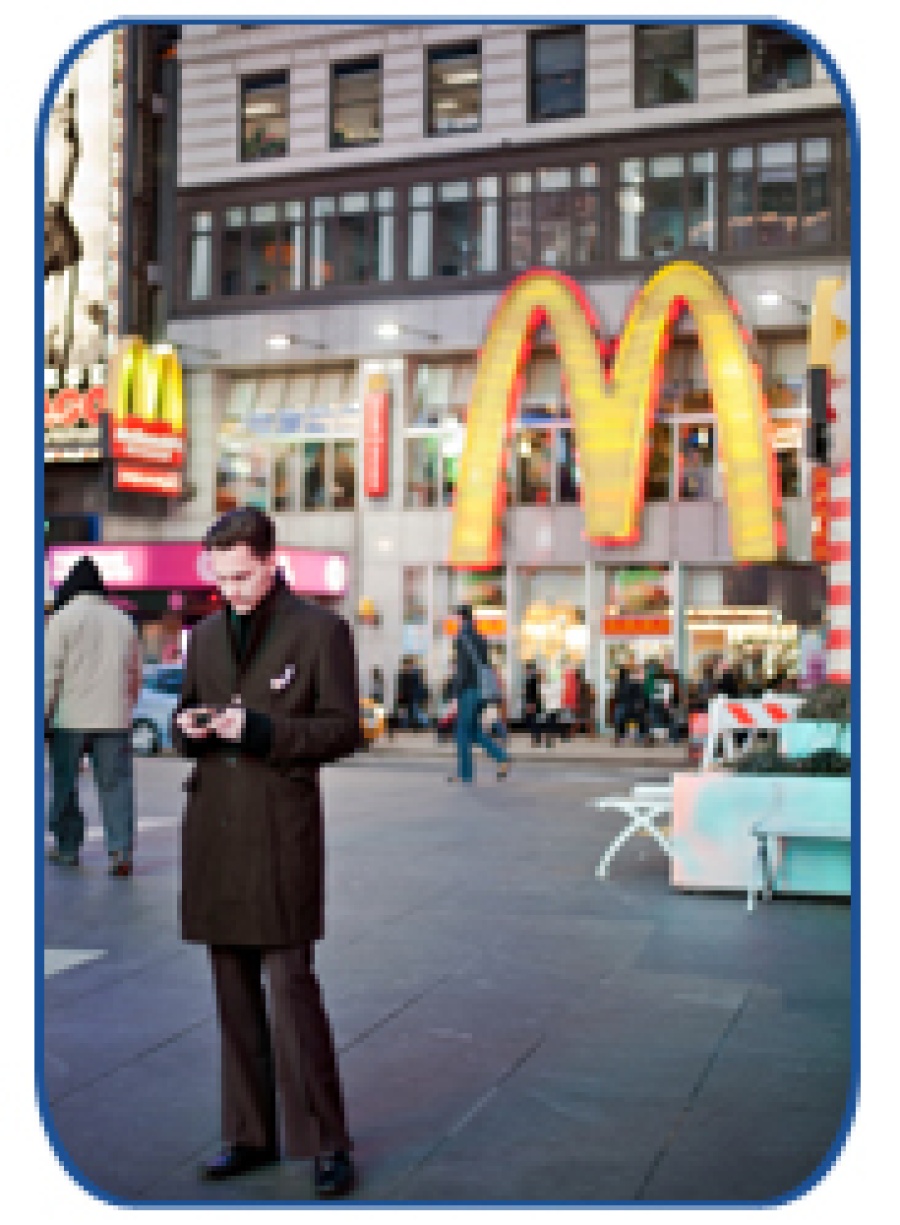
The success of McDonald's is the business equivalent of the American dream. While McDonald's was not the first franchise business, it has possibly become the premier example of the business model.
With roots that trace back to a single drive-in started by a pair of brothers, Dick and Mac McDonald, in Southern California, McDonald's has grown to a network of well over 30,000 locations in more than 100 countries.
So how did the chain grow from a single restaurant into the expansive corporation it is today? It's not a question that can be answered concisely because McDonald's is first-class in every segment of its operation.
With that in mind, this article focuses upon three of the characteristics which stand out when speaking about the success of McDonald's: consistency, innovation and resiliency.
Consistency
It doesn't matter if you're visiting a McDonald's in California or Connecticut, America or Australia – you're going to have a similar experience wherever you are.
This highlights Ray Kroc's vision for McDonald's from the beginning. Kroc was a salesman from Illinois who ventured to San Bernardino, California in 1954 when he noticed a larger than normal order for the milkshake multi-mixers he was selling came in.
When he arrived in Southern California, he was intrigued with what he witnessed – a restaurant that was efficiently serving a large number of customers who seemed pleased with the food they were receiving.
Sensing a business opportunity, he made a proposal to the McDonald brothers to begin franchising their restaurant concept, which the brothers eventually accepted. Kroc opened his first McDonald's in 1955 in Des Plaines, Illinois.
“Quality, service, cleanliness and value” was Kroc's motto. His belief in this motto was so strong he went on to found a training school, Hamburger University, in 1961 whose curriculum is based upon the four concepts, as well as lessons he had learned from his initial years in operating the franchise.
Consistency, of course, is the lynchpin of any franchise system and Hamburger University has systematically taught future franchisees how to run a McDonald's restaurant the way Ray Kroc envisioned.
Customers know what to expect and can take comfort in that knowledge when making a decision on where to eat. These efforts towards process repetition and efficiency not only set the basis for McDonald's success from the standpoint of customers' expectations, but also help McDonald's stay on top in a culture where producing at a quick pace is commonly expected. It's earned them a history of growth and expansion.
Innovation
At first, the characteristics of consistency and innovation seem to contradict one another. But in fact, they work together to allow for McDonald's continued growth. Staying consistent on the core components of your business doesn't mean the products you sell, or even the way you deliver them, have to stay the same.
It's a delicate balance. However, if you take the necessary steps, and put the work in ahead of time, you can tweak your product without causing disruptions, and potentially better serve your customers. Innovation stemming from responsiveness to customers and franchisees has played a big role in McDonald's fending off stagnation over the years.

For example, in 1975 a group of potential McDonald's customers had a problem: at that time, soldiers in a certain locale weren't permitted to get out of their cars while wearing their fatigues. After learning of this problem, McDonald's came up with a solution: add a drive-thru.
The first McDonald's drive-thru was located near military base Fort Huachuca in Sierra Vista, Arizona to serve the soldiers, with additional drive-thru locations in Georgia and Oklahoma City soon following.
In addition, McDonald's product offerings have evolved over the years alongside the tastes of their customers thanks in part to some observant and innovative franchisees. A few examples of products that were introduced after being developed by McDonald's franchisees or owner/operators are:
- Filet-O-Fish
- Big Mac
- Hot Apple Pie
- Egg McMuffin
- McFlurry
These menu innovations (along with items developed in their test kitchen) have allowed for McDonald's to hold product offerings for all meal times, and the snack periods that fall in between, allowing for greater profitability. But McDonald's takes great care not to affect the consumer experience when a new item is introduced.
As then-McDonald's CEO James Skinner said in a 2010 interview with CNBC, “[McDonald's doesn't] put something on the menu until it can be produced at the speed of McDonald's".
Resiliency
But perhaps the biggest reason McDonald’s has been a success for so long is its ability to weather storms. Though the trajectory for McDonald's has been primarily upward throughout its existence, the company has had to weather several challenges and controversies.
McDonald's has had many lawsuits directed at them for various issues, and has been the subject of a large amount of negative press. What does McDonald's do to combat this negativity?
From an outside perspective, it appears that at least part of their strategy entails acknowledging the concern or issue, and then dedicating resources in-house to staying on top of the issue, as the following examples illustrate.
Example 1:
Many of the challenges McDonald's has faced over the years are related to health concerns, particularly related to children. In response to these concerns, McDonald's formed the Global Advisory Council (GAC) in 2004. The GAC is an international team of independent experts assembled by McDonald's to provide us with professional guidance in the areas of nutrition and children's well-being.
Several additions to their menu items have come in answer to critics' and consumers' desire for healthier choices. Some examples of these choices include an increased variety of salads, fruit and maple oatmeal, and the option of being able to order a Happy Meal with apple dippers and apple juice or 1% low-fat milk as the drink.
In addition, McDonald's was one of the first fast food restaurants to provide nutrition facts on their packaging, beginning in 2006.
In March 2015, they announced more changesto the food being sold, saying they would use only chickens largely antibiotic free, and a choice of low-fat and chocolate milk from cows not treated with the artificial growth hormone BST.
Example 2:

When it comes to sustainable environmental practices, activists have been raising concerns over McDonald's policies for decades.
In the mid-1980s, McDonald's began facing one of its staunchest challengers in the activist group London Greenpeace (not affiliated with the international Greenpeace organization).
In a leaflet entitled “What's Wrong with McDonald's?” the group alleged that the food that McDonald's served was bad for people's health and that actions used to produce their food products and packaging contributes to the destruction of rainforests, among other things.
In response, McDonald's formally established a Global Environmental Commitment in 1990 that outlines the steps they have taken to reduce solid waste, conserve and protect natural resources, along with encouraging others to be accountable for their actions.
One of results of this commitment is that currently 82% of McDonald's consumer packaging is made from renewable materials. But, McDonald's did take a big PR hit through the actions of members of the London Greenpeace group that is well documented by the “McLibel” case and subsequent accounts of the litigation.
Maintaining goodwill:
How can McDonald's turn these tribulations into bumps in the road instead of them have a devastating impact on business? Part of the reason McDonald's can be resilient when they are challenged is an established rapport within the community. When controversies arise, having goodwill with consumers can help any company weather the storm. Ways McDonald's cultivates goodwill with consumers include their involvement in youth sports programmes and charity programmes such as Ronald McDonald House charities.
Present-day challenges and actions:
McDonald's is drawing upon all its experience in dealing with adversity again as the last two years have been a comparative struggle for the fast food franchise.
Much of the decline has come from a dearth of Millennial customers. According to Technomic, in the last three years, visits to McDonald’s by people between 19 and 21 years old has fallen by 13%. It seems this age cohort is turning towards trendier – and in a number of cases healthier – options from other fast food and casual dining restaurants. But like before, it seems the food franchise is following its protocol of acknowledging the issue and then committing resources to batting the problem.
Part of McDonald's plan is to let franchisees have more autonomy in making menu decisions. McDonald's CEO Don Thompson says the changes will "better highlight customers’ favourites and to make the experience faster and easier for our customers and our crew".
Over the last few years, McDonald's menu has grown by 70%. The increase in menu items has led to complaints that the traditional "speed of McDonald's" has been slowing down noticeably and affecting customer, and employee, satisfaction.
But the paring down of menu items doesn’t mean lessening the choices customers have. In fact, it’s the opposite. The company has been experimenting in Australia with letting customers pre-order their burgers by kiosk with toppings like guacamole, bacon, or jalapenos. There are also breakfast sandwich options available to customers including egg whites and white cheddar substitutes.
The company is also giving customers more transparency. Its "Our food. Your questions" campaign is designed to combat the negative stereotypes McDonald's has picked up over the years, and allay the fears a number of consumers have about McDonald's food.
Lessons to be learned:
Very few companies will ever come near the magnitude of operation McDonald's has achieved. However, the lessons the corporation showcases are on display to be learned by entrepreneurs striving to make their company the best it can be. The success of McDonald's can be attributed to many more factors that have been discussed in this article, but these are three which have contributed heavily to it. The takeaways:
Developing strong, efficient processes and procedures and remaining consistent on them allow for businesses to develop consumer confidence in the brand.
Having the foundation of consistent processes allow businesses the flexibility to innovate and adapt to consumers' concerns, and improve the brand with minimal disruption.
Problems and downtimes will happen in business. Having an established rapport with consumers can help businesses be resilient when difficulties arise.














